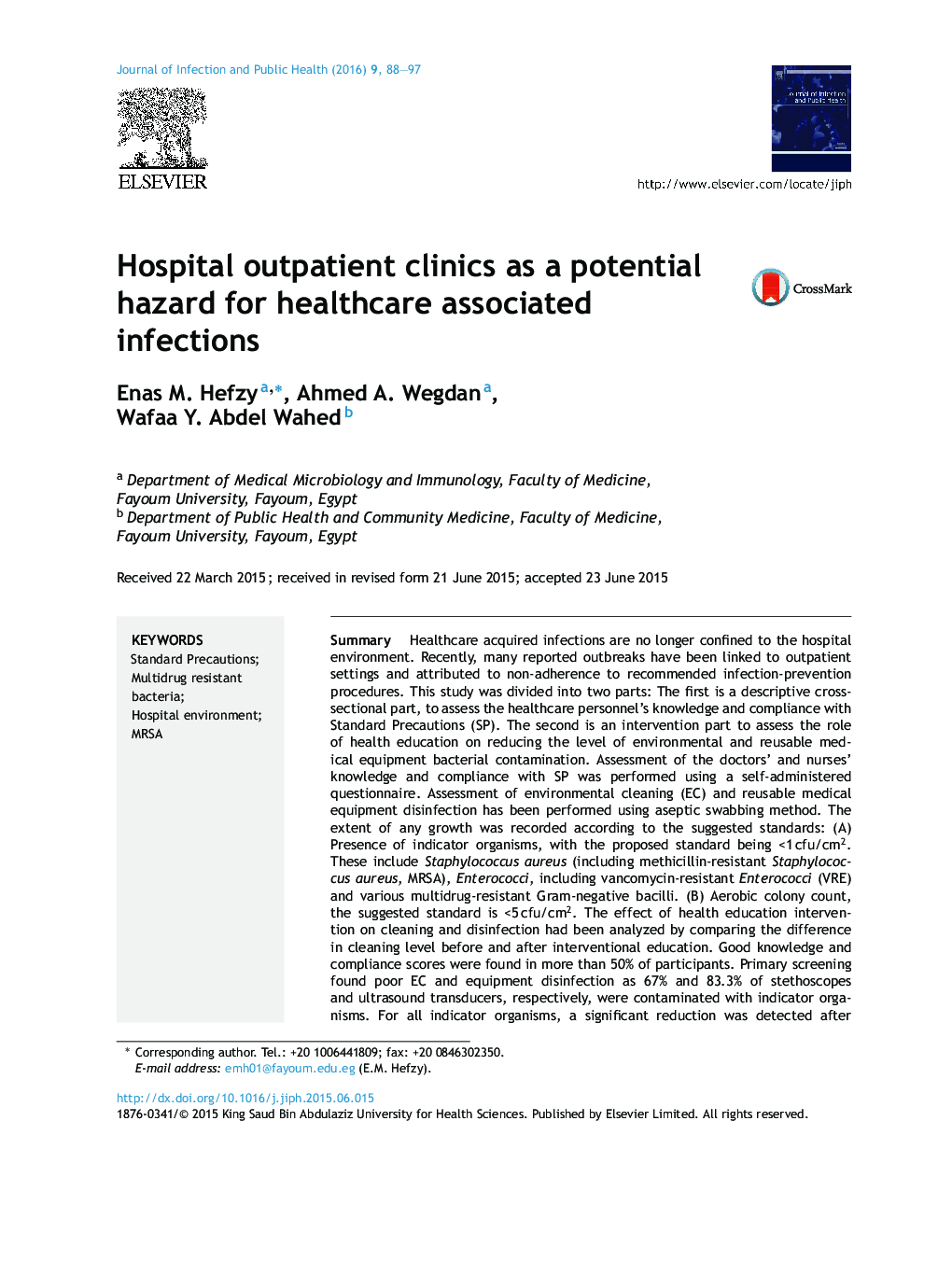| Article ID | Journal | Published Year | Pages | File Type |
|---|---|---|---|---|
| 3405930 | Journal of Infection and Public Health | 2016 | 10 Pages |
SummaryHealthcare acquired infections are no longer confined to the hospital environment. Recently, many reported outbreaks have been linked to outpatient settings and attributed to non-adherence to recommended infection-prevention procedures. This study was divided into two parts: The first is a descriptive cross-sectional part, to assess the healthcare personnel's knowledge and compliance with Standard Precautions (SP). The second is an intervention part to assess the role of health education on reducing the level of environmental and reusable medical equipment bacterial contamination. Assessment of the doctors’ and nurses’ knowledge and compliance with SP was performed using a self-administered questionnaire. Assessment of environmental cleaning (EC) and reusable medical equipment disinfection has been performed using aseptic swabbing method. The extent of any growth was recorded according to the suggested standards: (A) Presence of indicator organisms, with the proposed standard being <1 cfu/cm2. These include Staphylococcus aureus (including methicillin-resistant Staphylococcus aureus, MRSA), Enterococci, including vancomycin-resistant Enterococci (VRE) and various multidrug-resistant Gram-negative bacilli. (B) Aerobic colony count, the suggested standard is <5 cfu/cm2. The effect of health education intervention on cleaning and disinfection had been analyzed by comparing the difference in cleaning level before and after interventional education. Good knowledge and compliance scores were found in more than 50% of participants. Primary screening found poor EC and equipment disinfection as 67% and 83.3% of stethoscopes and ultrasound transducers, respectively, were contaminated with indicator organisms. For all indicator organisms, a significant reduction was detected after intervention (p = 0.00). Prevalence of MRSA was 38.9% and 16.7%, of the total S. aureus isolates, before and after intervention, respectively. Although 27.8% of the total Enterococcus isolates were VRE before intervention, no VRE isolates were detected after intervention. These differences were significant. Development and monitoring of the implementation of infection prevention policies and training of HCP is recommended.
